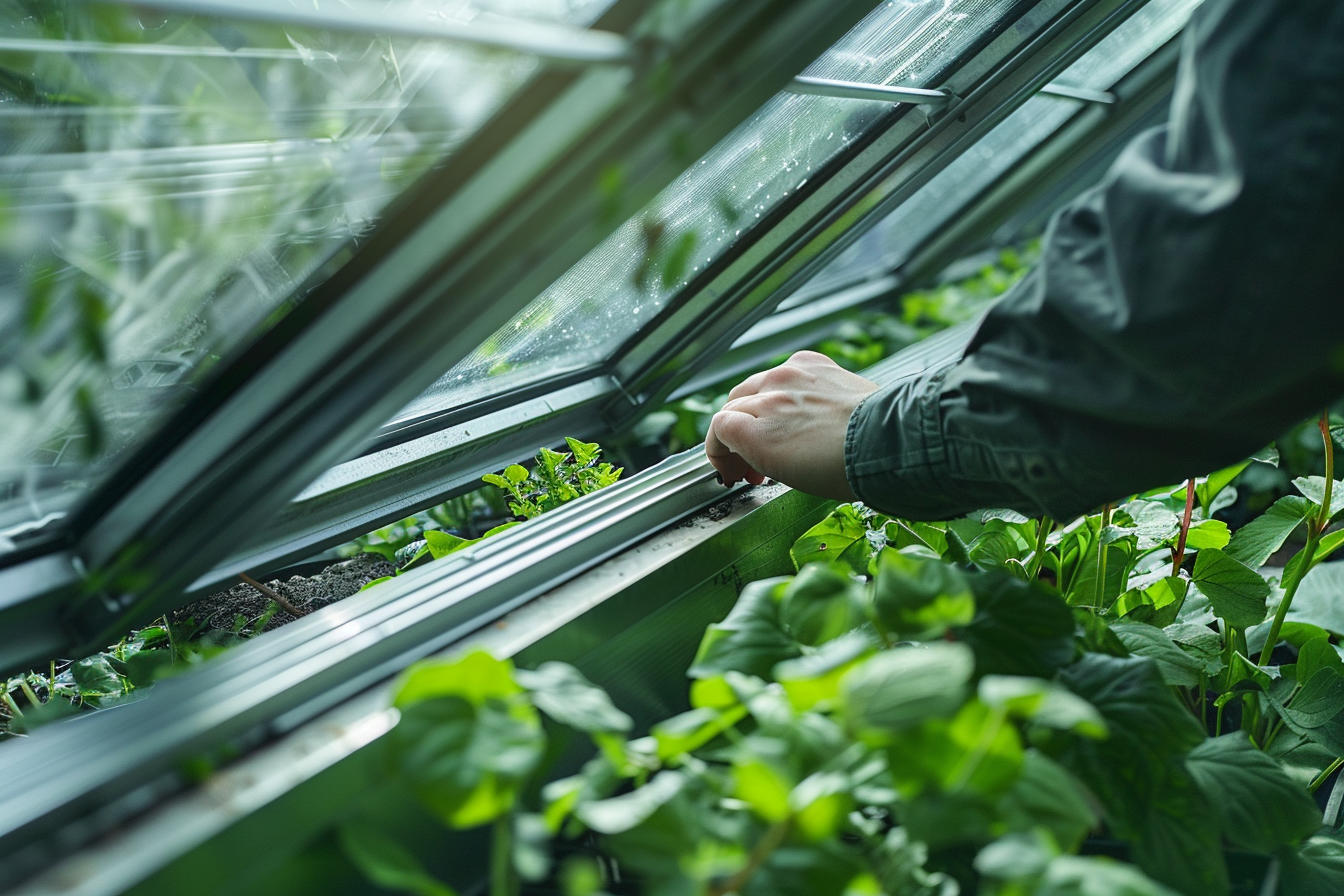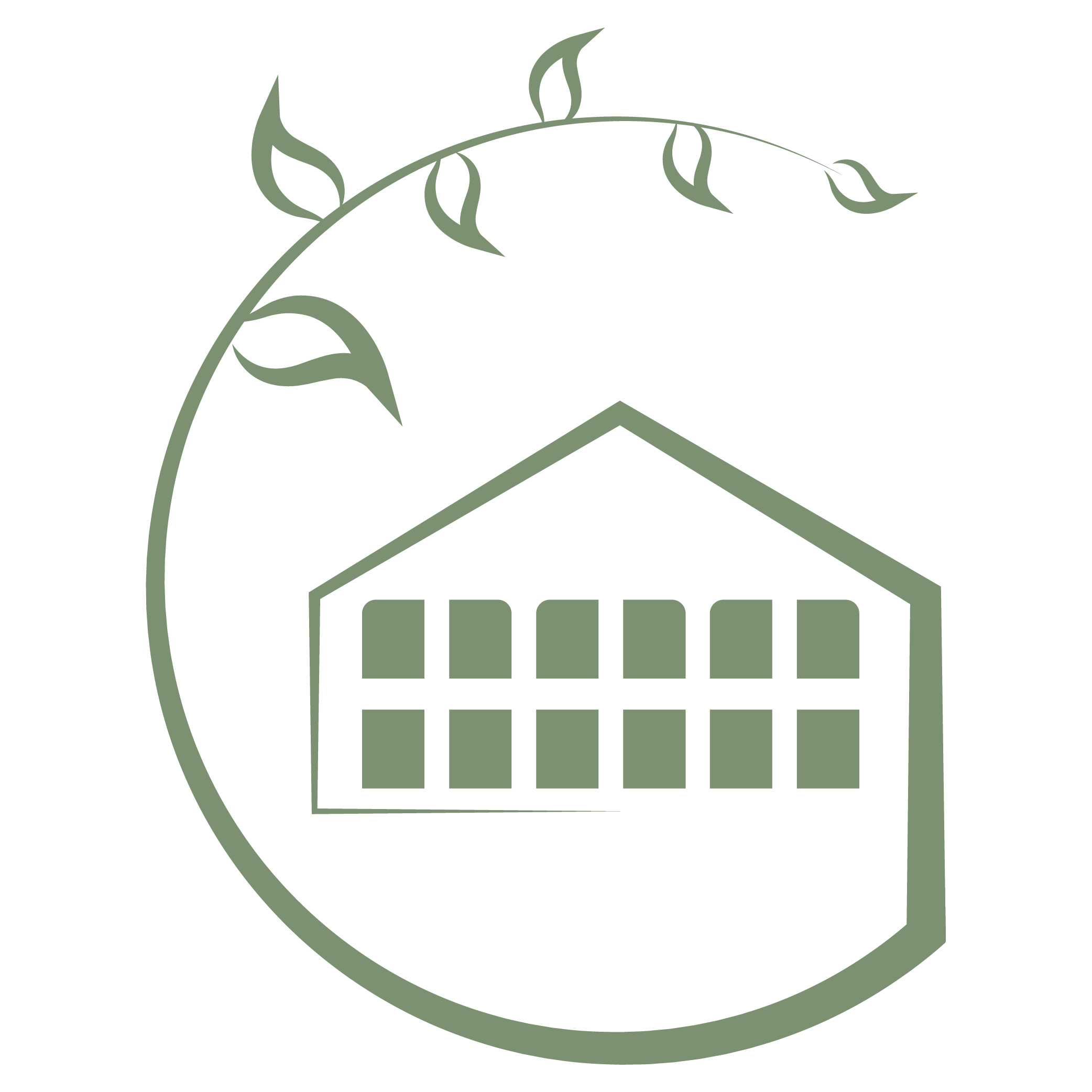
ARTICLES
Read About Conservatories & Greenhouses...

Maximizing Growth: The Best Poly Panels for Greenhouse Efficiency and Durability
Choosing poly panels for a greenhouse is decisive for plant health and structural longevity. This article dives directly into the benefits and selection process of polycarbonate panels, ensuring your greenhouse thrives under the most efficient and durable materials.
Key Takeaways
Polycarbonate panels are favored for greenhouses due to their durability, light transmission, UV protection, and thermal insulation, suiting diverse climates and construction needs.
Thickness and structural design of polycarbonate sheets (e.g., twin-wall, triple-wall) are critical factors for optimizing insulation, strength, and light transmission for specific greenhouse applications.
Proper installation techniques and accessories are essential for maximizing polycarbonate panels’ lifespan and performance, including considerations for cold forming, sealing, ventilation, and resistance to diverse environmental impacts.
Understanding Polycarbonate Panels for Greenhouses
Polycarbonate panels, recognized for their durability, light transmission, thermal insulation, and UV protection, are an excellent choice for greenhouses. They offer the following benefits:
Create ideal conditions for plant growth
Provide impact resistance
Tolerate extreme temperatures
Suitable for diverse climates
Suitable for high-risk impact areas
Moreover, they provide versatility for varying construction needs. From small backyard greenhouses to large commercial ventures, polycarbonate panels have proven to be a reliable material choice. What distinguishes these panels? To fully comprehend their advantages, we must examine the specifics of polycarbonate panels.
Multiwall Polycarbonate Sheets
When it comes to enhancing structural strength and insulation in greenhouses, multiwall polycarbonate sheets, also known as multi-wall sheets, are a go-to choice. They come in various forms such as twin-wall, triple-wall, and five-wall sheets. These sheets owe their strength and UV protection to their internal structure, comprising layers connected by ribs.
Apart from their structural benefits, these sheets are also lightweight, making them easy to handle. Additionally, their high impact resistance makes them ideal for greenhouse applications, where they are often exposed to external threats like hail or strong winds.
Light Transmission and UV Protection
High light transmission rates are among the most noteworthy characteristics of polycarbonate panels. They can transmit up to 92% of light, providing well-lit conditions ideal for plant growth. But light transmission, or light transmittance, is just one part of the story. These panels also offer UV protection, filtering out harmful UV radiation that could damage plants while allowing UV-A rays to enhance plant coloration and resistance to stress and pests.
Thus, while the plants bask in plenty of sunlight, they remain shielded from damaging UV radiation. Moreover, thanks to UV-resistant coatings, these panels maintain their clarity and resist brittleness or discoloration due to UV exposure. The synergy between light transmission and UV protection not only facilitates plant growth but also extends the service life of the polycarbonate sheets.
Choosing the Right Thickness for Your Greenhouse
Deciding on the thickness of polycarbonate panels is a pivotal step in greenhouse construction. The strength of the greenhouse frame and desired insulation greatly influence this decision. It is important to remember that the greater the sheet thickness, the wider the possible purlin spacing due to increased load capacity per gauge.
Different thicknesses are used for different applications. For instance, builders often use 16mm multiwall polycarbonate sheets for high-protection roofing applications, while 6mm, 8mm, and 10mm twinwall panels provide ample protection for less demanding roofing uses like pergolas and canopies.
Triple Wall Polycarbonate Sheets
Triple wall polycarbonate sheets excel in providing a high degree of exceptional thermal insulation and durability, creating an ideal environment for demanding greenhouse applications. Their low thermal conductivity makes them an ideal choice for projects such as a four-season greenhouse using these panels, which maintains a ground temperature of 80 degrees even on sub-zero days. To ensure proper installation and support, an h channel can be used to connect the panels.
These sheets are available in clear, bronze, or opal, measuring 4 feet by 8 feet. This variety caters to different greenhouse applications, including those requiring high light transmission. Plus, their structural robustness, thanks to the internal chamber design, combines with a lighter weight, making them superior to other materials.
Twin-Walled Polycarbonate Panels
Twin-walled polycarbonate panels serve as a cost-effective and lightweight solution for greenhouse construction, including vertical glazing. These panels combine strength with lightness, making them suitable for greenhouse construction where sturdy yet lightweight materials are advantageous.
Their durability, thermal efficiency, and modest UV protection make them a cost-effective solution for greenhouses. Beyond traditional greenhouse coverings, the durability of twin-walled polycarbonate panels also supports applications like cladding and constructing translucent walls.
Installation Tips and Accessories
Correct installation is vital for maximizing the performance and lifespan of polycarbonate greenhouse panels. During installation, it’s crucial to:
Maintain the protective film
Allow for thermal expansion by leaving a gap of 1/8 inch
Cut the panels with fine tooth blade saws
Ensure cleanliness with compressed air
Use screws with neoprene bonded washers without overtightening
Apply silicone sealant where necessary
Installation also requires accessories like vent tape, aluminum tape, and screws, which may be sold separately. Comprehensive installations may need accessories such as Aluminum Ridge Rolls, Aluminum Sidewalls, Aluminum Endwall Flashing, Multiwall Tape, and Multivent Tape for an optimal setup.
Easily Cold Formed
A significant benefit of polycarbonate panels is their ability to be cold-formed without the risk of cracking or splintering. This offers versatility in fabrication for various applications. However, while cold forming is possible, it’s important to note that polycarbonate sheets have a minimum bending radius of 150 times their thickness. This is to avoid over-bending and potential damage to the polycarbonate sheet.
Proper Sealing and Ventilation
Effective sealing and ventilation of polycarbonate panels are critical. Here are some tips to ensure proper sealing:
Panel joints should be sealed with silicone sealant to prevent water and air ingress that could negatively impact plant growth.
Use solid foil tape at the top of polycarbonate sheets to effectively seal out water and insects.
Use vented tape at the bottom to allow condensation to disperse while still sealing out water and insects.
By following these tips, you can ensure that your polycarbonate panels are properly sealed and ventilated.
Polycarbonate greenhouses are low maintenance, easier to clean, and less prone to condensation buildup compared to those with glass. This means less time spent on maintenance and more time enjoying the fruits of your labor!
Comparing Polycarbonate Panels with Glass and Other Materials
Despite the multitude of benefits offered by polycarbonate panels, how do they compare to glass and other materials? Well, when it comes to cost-effectiveness, polycarbonate panels take the lead. They come at an approximate cost of $0.12 per square foot, compared to glass which is priced at $2 to $2.50 per square foot.
However, it is worth noting that although more cost-effective initially, polycarbonate panels require replacement every 10-25 years, unlike glass panels which can last for 40-50 years. This trade-off between initial cost and lifespan is an important consideration when choosing materials for your greenhouse.
Energy Efficiency
When it comes to energy efficiency, polycarbonate panels have a clear advantage over glass. The R-value of these panels is approximately 1.54 per inch, which indicates higher thermal efficiency compared to standard single-pane glass which has an R-value of about 0.16.
This superior insulation allows for more consistent temperatures, benefiting plant growth and seed germination. Furthermore, the enhanced insulation features of polycarbonate panels can lead to lower heating costs and reduced utility bills.
Durability and Longevity
When selecting materials for your greenhouse, durability and lifespan are crucial factors to consider. Polycarbonate panels are significantly more durable than glass, able to withstand substantial stress from impacts such as hail and flying debris without breaking.
Polycarbonate has several advantages over other materials:
It is 200 times stronger than glass
It is 30 times stronger than acrylic
It can absorb impacts up to 250 times more effectively than glass
It offers enhanced security and is less likely to shatter
These properties make polycarbonate a safe and durable choice for environments with potential for accidental damage.
Let's Explore Some Top Polycarbonate Panel Options:
Real-World Applications and Success Stories
Polycarbonate panels have been successfully implemented in a broad spectrum of real-world situations, including window replacements. These panels have been used to replace damaged panels on greenhouses, showing their resilience against challenges such as high winds. Furthermore, their energy efficiency and light reception capabilities were demonstrated in a four-season greenhouse project that utilized a heated sand floor and a uniquely designed south wall.
These success stories serve as a testament to the practical value of polycarbonate panels. They showcase how the right choice of materials can help create a thriving environment for plant growth, contributing to the success of greenhouse projects.
Summary
Polycarbonate panels have proven to be a reliable and efficient choice for greenhouse construction. They offer numerous benefits including durability, light transmission, thermal insulation, and UV protection, making them a preferred choice over glass and other materials. These panels come in various forms and thicknesses, catering to a wide range of applications and requirements.
Remember, the right choice of materials can significantly enhance your greenhouse’s performance. Whether you are a hobby gardener or a commercial grower, consider polycarbonate panels for your greenhouse and experience the myriad benefits they offer. It’s time to take a step towards a greener future!
Frequently Asked Questions
What are the benefits of polycarbonate panels for greenhouses?
Polycarbonate panels are an excellent choice for greenhouses due to their durability, light transmission, thermal insulation, and UV protection. They offer multiple benefits for greenhouse structures.
How do I choose the right thickness for my polycarbonate panels?
Choose the thickness of your polycarbonate panels based on the strength of your greenhouse frame and the level of insulation you want to achieve. This will ensure optimal performance and longevity for your panels.
How do polycarbonate panels compare with glass?
Polycarbonate panels are a more cost-effective and energy-efficient option compared to glass, but they have a shorter lifespan. Consider these factors when deciding between the two materials.
How to get Started!
We would love to speak with you regarding your project & answer any questions or concerns you may have about your conservatory or greenhouse. We love what we do & helping our clients bring their ideas to life. No project is the same & we strive to make the process as enjoyable & exciting for our clients as possible.
Copyright© 2023 • Alpine Designs • All Rights Reserved
Copyright© 2023 • Alpine Designs • All Rights Reserved
